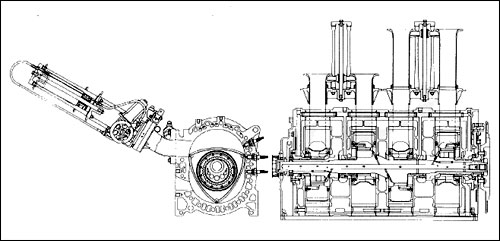400 Horses for a 2017 Mazda RX-7?

With a rumor mill almost as productive as the one prophesying the return of the Toyota Supra, the latest scoop from the “new RX-7” cloud of unsubstantiated gossip foresees 400+ horsepower from a next-generation rotary powerplant.
People tend to forget that car specifications—power, weight, grip and the like—are driven more by what market niche the car is intended to fill rather than what’s technically possible. So let’s assume for a moment, contrary to all actual and official evidence, that Mazda really does plan to unveil a true RX-7 successor in the next few years. A better way to speculate about the new car’s eventual output would be to “think like a marketer” and determine which corner of the sports car spectrum the car would be designed to occupy. I can think of three possible targets for Mazda’s new performance flagship:
- Toyota/Subaru GT86/BRZ competitor: Unlikely. The Toyotaru Twins offer slightly better performance than Mazda’s own Miata but adhere to a similar “driver-first” ethos. Making what amounts to a marginally faster hardtop Miata with a rotary engine would be a lot of fun, and would take advantage of the current mini-backlash against the current crop of overpowered, inert speed appliances, but fundamentally, such an approach would still edge too closely to the Miata’s territory.
- Pony car / Corvette killer: The article alludes to this possibility when it conjectures that a new RX-7 would “seriously challenge the Porsche 911.” The problem with this theory is that the high-end performance car market segment is currently engaged in a DEFCON 1, no-holds-barred arms race, outputs soaring above 600 hp with roadholding to match. In theory, Mazda could make a strong showing in this category by replicating yet amplifying the third-generation RX-7 formula: A high-strung turbocharged rotary offering competitive power in a lightweight chassis with hair-trigger reflexes. They certainly have the technical chops. But the matter of resources rears its ugly head: The automaker simply doesn’t have the capital to develop and support such a car on a mass-production scale. The fact that residents of this market segment like the Mustang, Corvette, Viper and Camaro are upping the power ante practically ever other week doesn’t help either. Besides, this niche is the obvious choice, and while Mazda’s approach to it would be unique, I’d like to think their target selection would be a little more…nuanced.
- Porsche Cayman / Nissan 370Z alternative: This makes more sense. Does it basically take over from where the RX-8 left off? Yes—but with the power and styling the RX-8’s chassis always deserved. If an RX-7 successor can take what actually worked about the ‘8—and given Mazda’s track record, there’s no reason to think they wouldn’t—and shore up the areas in which it was deficient, sharpening the car’s focus by axing the back seats and giving us a bonafide sports car, they might have a winner on their hands. Here’s the recipe for success in this niche: A direct-injected, 300+ hp rotary; 2 seats; perfect (and I do mean perfect) looks, transcendent driving dynamics and a curb weight under 3,000 lbs. The time is ripe; the 370Z’s basic platform has been around since 2003 and has always been somewhat awful when pushed to 10/10s. And while the Cayman is as dead-nuts perfect as a sports car can be, it’s been rampaging alone in its market segment for far too long. It’s time, Mazda.
Image credits: hkcarworld.com





















